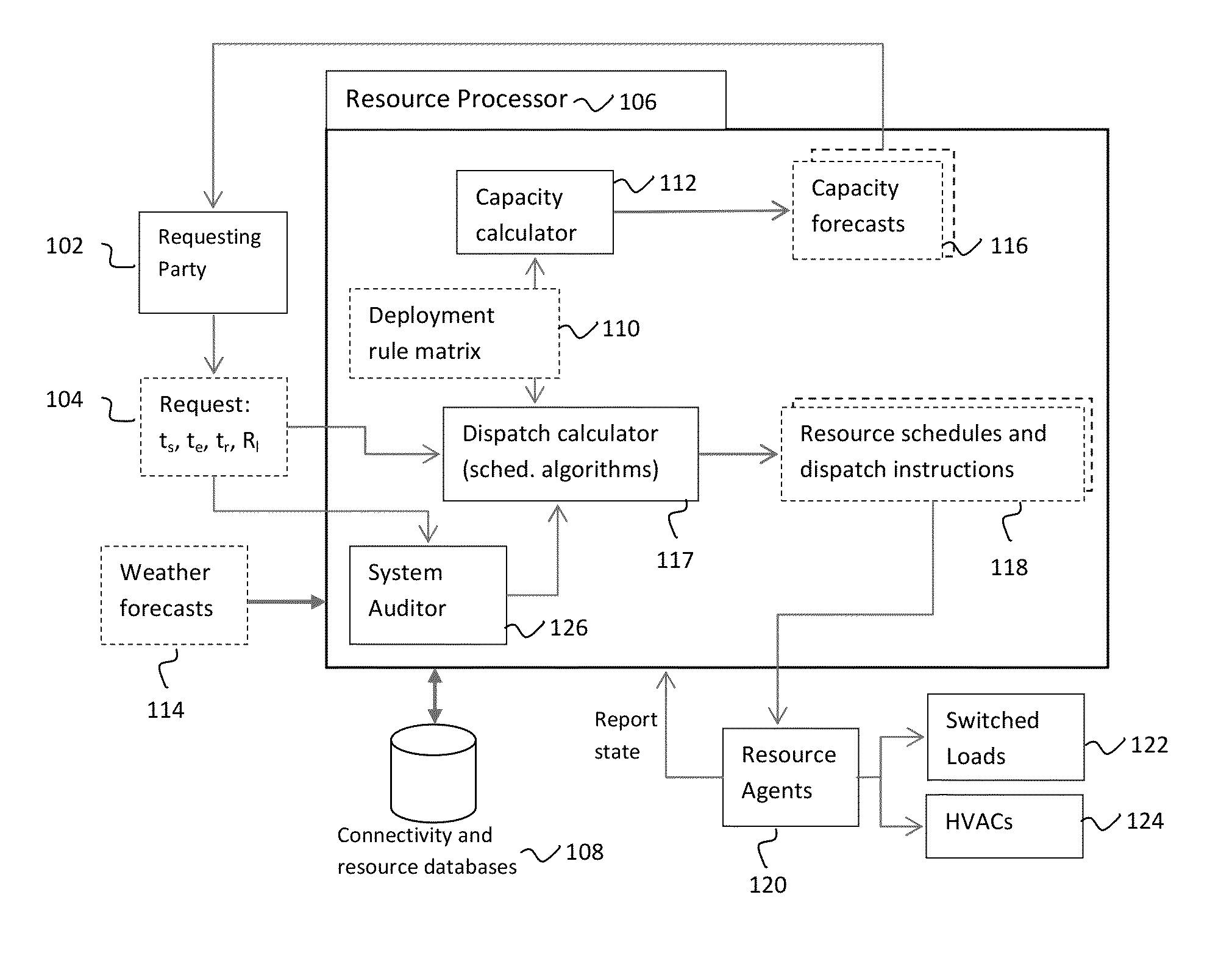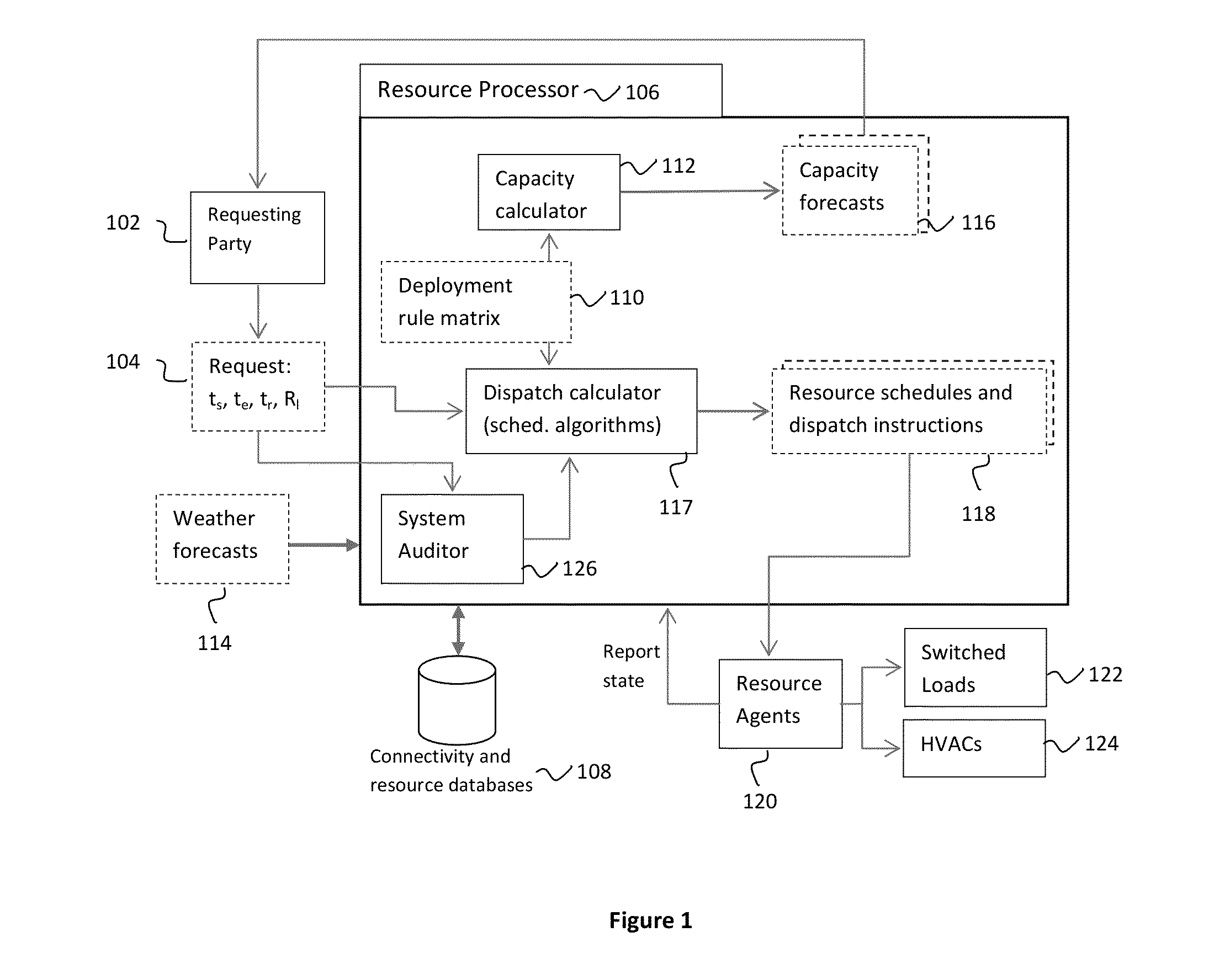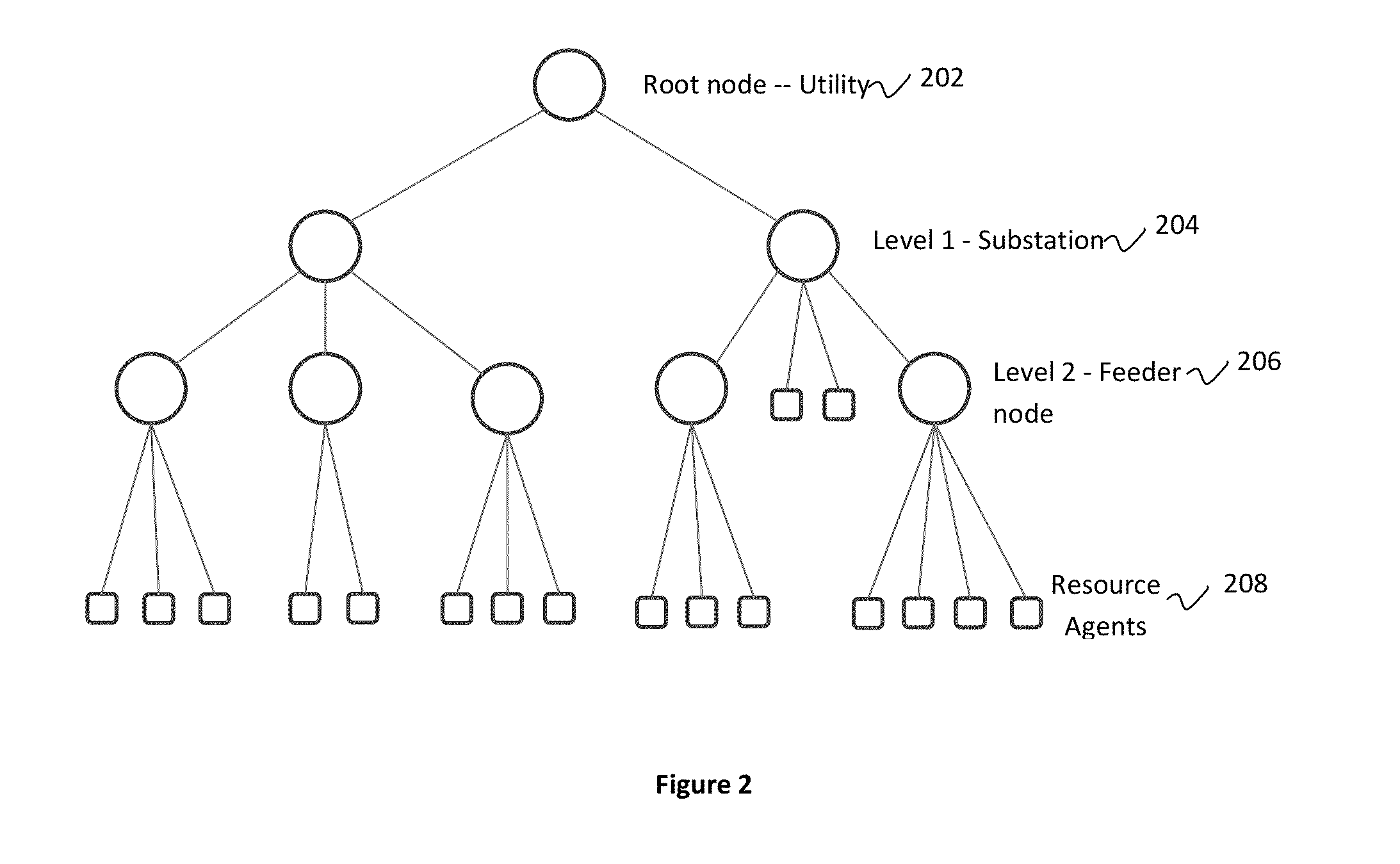Grid Optimization Resource Dispatch Scheduling
a technology of grid resource and dispatch scheduling, applied in the direction of adaptive control, static/dynamic balance measurement, instruments, etc., can solve the problems of inefficient means to ensure power can be delivered in response, rapid increase of electrical load of the power grid, damage to the environment, etc., to optimize the overall grid utilization, optimize the effect of resource availability and improved grid efficiency
- Summary
- Abstract
- Description
- Claims
- Application Information
AI Technical Summary
Benefits of technology
Problems solved by technology
Method used
Image
Examples
Embodiment Construction
[0029]FIG. 1 is a schematic overview 100 of the components contributing to the process of scheduling resources to satisfy a request. A request generator such as a utility or other entity 102 knowing the total aggregated resource load it has under control as a function of time and temperature, issues a request 104, which may include the intent to shed a desired load from the electrical grid at a given time and duration. The request enters the resource processor 106 where algorithms generate unique schedules and instructions to control from one to many resources as may be needed to satisfy the request, and are available and under management of the entire system. The resource processor may also have electrical connectivity, normal operating characteristics of the resources and other inputs or databases 108 to determine applicable resources by geographic location, type and distribution network connection, which may be required to fulfill the request. Furthermore, the resource processor ...
PUM
 Login to View More
Login to View More Abstract
Description
Claims
Application Information
 Login to View More
Login to View More - R&D
- Intellectual Property
- Life Sciences
- Materials
- Tech Scout
- Unparalleled Data Quality
- Higher Quality Content
- 60% Fewer Hallucinations
Browse by: Latest US Patents, China's latest patents, Technical Efficacy Thesaurus, Application Domain, Technology Topic, Popular Technical Reports.
© 2025 PatSnap. All rights reserved.Legal|Privacy policy|Modern Slavery Act Transparency Statement|Sitemap|About US| Contact US: help@patsnap.com



